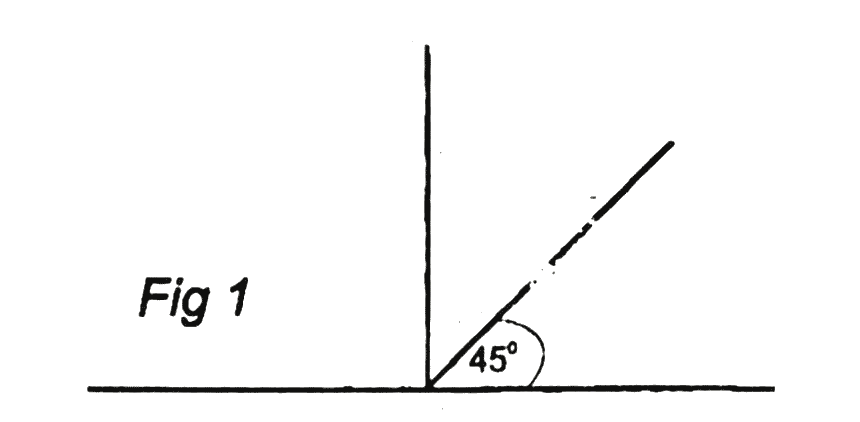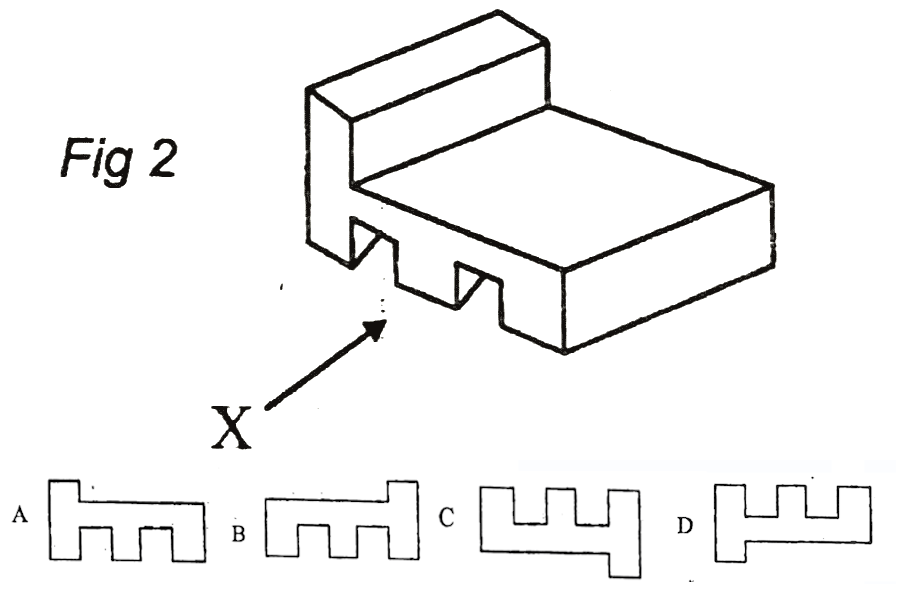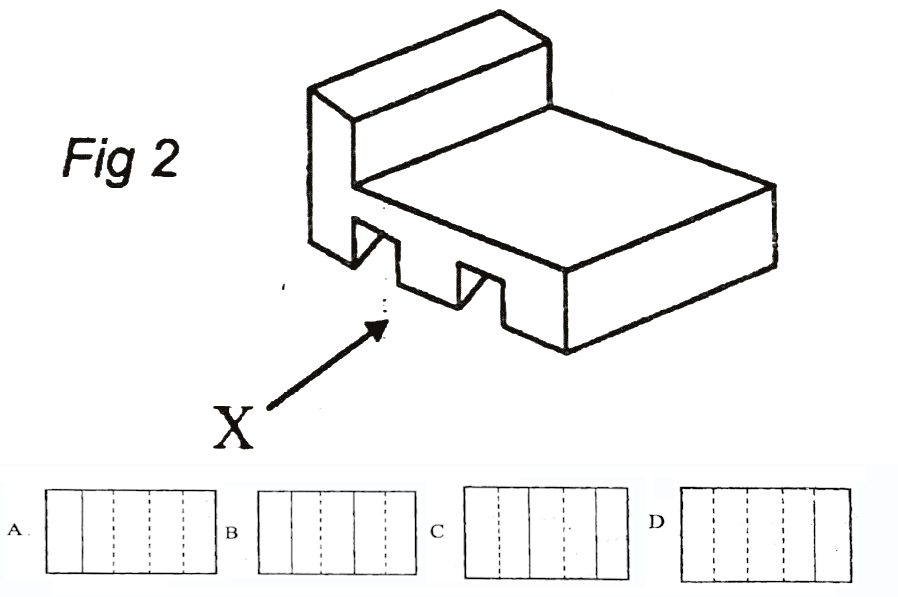1. Which of the following is a neatening stitch?
A. Overcasting
B. Feather
C. Chain
D. Stem
A. Overcasting
B. Feather
C. Chain
D. Stem
2. Green leafy vegetables and sea foods provide the body with
A. minerals
B. proteins
C. vitamins
D. fats
A. minerals
B. proteins
C. vitamins
D. fats
3. Which of the following is a dry method of cooking?
A. Boiling
B. Baking
C. Stewing
D. Steaming
A. Boiling
B. Baking
C. Stewing
D. Steaming
4. The lightness or darkness in drawing is the
A. hue.
B. shade.
C. tint.
D. tone.
A. hue.
B. shade.
C. tint.
D. tone.
5. Any two primary colours mixed together in equal proportions produce a
A. complementary colour.
B. neutral colour.
C. secondary colour.
D. tint colour.
A. complementary colour.
B. neutral colour.
C. secondary colour.
D. tint colour.
6. Which of the following lines is used for showing visible outlines?
A. Short dashes
B. Long chain
C. Thick continuous
D. Thin continuous
A. Short dashes
B. Long chain
C. Thick continuous
D. Thin continuous
7. Figure 1, illustrates the principle of

A. oblique axes
B. perspective axes
C. isometric axes
D. orthographic axes

A. oblique axes
B. perspective axes
C. isometric axes
D. orthographic axes
8. From the following options, select the designing media mixed with water.
A. Charcoal
B. Crayon
C. Chalk pastel
D. Poster colour
A. Charcoal
B. Crayon
C. Chalk pastel
D. Poster colour
9. In design analysis, the size of the unit is considered under
A. cost
B. ergonomics
C. safety
D. function
A. cost
B. ergonomics
C. safety
D. function
10. Figure 2 is a block. Use it to answer Questions 10 and 11.
Which of the following represents the front elevation in the direction of arrow X?

A. A
B. B
C. C
D. D
Which of the following represents the front elevation in the direction of arrow X?

A. A
B. B
C. C
D. D
11. The plan is represented by

A. A
B. B
C. C
D. D

A. A
B. B
C. C
D. D
12. The two methods of drawing orthographic views are
A. first angle and second angle.
B. first angle and third angle.
C. second angle and third angle.
D. second angle and fourth angle.
A. first angle and second angle.
B. first angle and third angle.
C. second angle and third angle.
D. second angle and fourth angle.
13. A vertical line is associated with
A. movement
B. rest
C. stability
D. uncertainty
A. movement
B. rest
C. stability
D. uncertainty
14. Which of the following situations is an indirect risk to a small business?
A. Flood
B. Fire
C. Inflation
D. Theft
A. Flood
B. Fire
C. Inflation
D. Theft
15. The factors to consider when setting up a sewing business include
A. capital, location and personal needs.
B. capital, location and equipment.
C. raw materials, market and business risks.
D. raw materials, personal needs and demand.
A. capital, location and personal needs.
B. capital, location and equipment.
C. raw materials, market and business risks.
D. raw materials, personal needs and demand.
16. Which of the following equipment is least important when setting up a sewing industry?
A. Sewing machine
B. Pressing iron
C. Table
D. Ironing board
A. Sewing machine
B. Pressing iron
C. Table
D. Ironing board
17. Cotton is a vegetable fibre and therefore it is
A. heat-resistant
B. water proof
C. absorbent
D. warm
A. heat-resistant
B. water proof
C. absorbent
D. warm
18. When handsewing, start with a
A. double stitch.
B. knot.
C. single stitch.
D. tack.
A. double stitch.
B. knot.
C. single stitch.
D. tack.
19. Good stitches are usually
A. strong and long.
B. straight and long.
C. visible.
D. short.
A. strong and long.
B. straight and long.
C. visible.
D. short.
20. A French seam is suitable for
A. household articles.
B. outer garments.
C. bulky fabrics.
D. coarse fabrics.
A. household articles.
B. outer garments.
C. bulky fabrics.
D. coarse fabrics.
21. Accurate measurements must be taken in garment making to make garments
A. look beautiful.
B. look fashionable.
C. last longer.
D. fit well.
A. look beautiful.
B. look fashionable.
C. last longer.
D. fit well.
22. Which of the following is a reason for renovating articles? It
A. makes articles look brighter.
B. makes articles look gay.
C. makes articles last for a short time.
D. makes articles last longer.
A. makes articles look brighter.
B. makes articles look gay.
C. makes articles last for a short time.
D. makes articles last longer.
23. An example of a large catering equipment is
A. blender.
B. boiling pan.
C. mincer.
D. food slicer.
A. blender.
B. boiling pan.
C. mincer.
D. food slicer.
24. Which of the following is a moist method of cooking?
A. Grilling
B. Poaching
C. Baking
D. Roasting
A. Grilling
B. Poaching
C. Baking
D. Roasting
25. Creaming is a method used in the preparation of
A. rock buns.
B. pancake.
C. queen cake.
D. gingerbread.
A. rock buns.
B. pancake.
C. queen cake.
D. gingerbread.
26. A main meal should consist of
A. protein dish and carbohydrate dish.
B. appetizer and side dish.
C. dessert and protein dish.
D. carbohydrate dish and appetizer.
A. protein dish and carbohydrate dish.
B. appetizer and side dish.
C. dessert and protein dish.
D. carbohydrate dish and appetizer.
27. Which of the following is the correct order of writing a two course menu?
A. Protein dish, carbohydrate dish and dessert
B. Carbohydrate dish, appetizer and dessert
C. Protein dish, appetizer and carbohydrate dish
D. Appetizer, protein dish and carbohydrate dish
A. Protein dish, carbohydrate dish and dessert
B. Carbohydrate dish, appetizer and dessert
C. Protein dish, appetizer and carbohydrate dish
D. Appetizer, protein dish and carbohydrate dish
28. Kpoipoi is an ethnic dish for the
A. Ewe
B. Fante
C. Akan
D. Ga
A. Ewe
B. Fante
C. Akan
D. Ga
29. Food commodities are
A. major ingredients used for cooking food.
B. dishes served for communities.
C. quality fruits and vegetables.
D. meals prepared during festivals.
A. major ingredients used for cooking food.
B. dishes served for communities.
C. quality fruits and vegetables.
D. meals prepared during festivals.
30. A menu forming a complete meal at a set price is known as
A. ethnic menu.
B. hospital menu.
C. table d’hôte.
D. À la carte.
A. ethnic menu.
B. hospital menu.
C. table d’hôte.
D. À la carte.





0 Comments